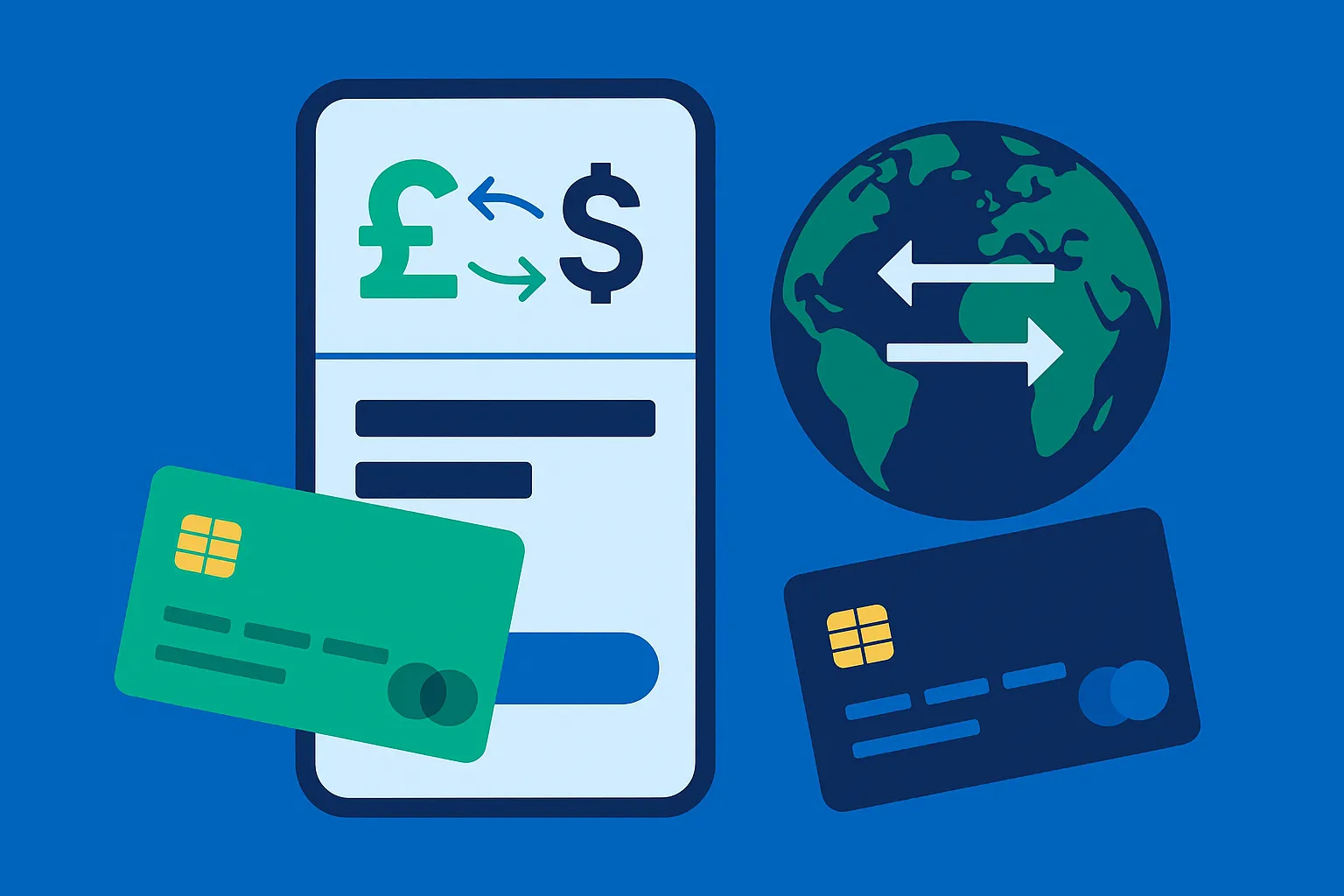Business Model of Wise, formerly known as TransferWise, has redefined how people and businesses move money across borders. Launched in 2011, Wise tackled the opaque fees and slow processes of traditional banks, delivering a faster, cheaper, and more transparent way to send money internationally.
Its business model of wise has become a blueprint for fintech startups looking to disrupt legacy financial systems. Studying how Wise operates, generates revenue, and maintains profitability offers valuable lessons for founders aiming to build innovative financial apps.
What is Wise & How It Works
Wise is a cross-border payments platform that helps individuals and businesses send, receive, and manage money internationally.
The Problem It Solves:
Before Wise, sending money abroad was expensive and frustrating. Banks often charged high fees and offered poor exchange rates hidden behind “no commission” claims. Wise solved this by offering transparent pricing and mid-market exchange rates, saving users significant costs.
Who Uses Wise?
- Freelancers and remote workers getting paid in foreign currencies
- Expats sending money home
- Small and medium businesses paying overseas invoices
- Digital nomads managing multi-currency balances
How It work Operates:
- Wise doesn’t actually move money across borders in the traditional sense. Instead, it uses a network of local accounts in each country.
- For example, if you send euros to the U.S., your euros go into Wise’s European account, and an equivalent amount of dollars is paid out from Wise’s U.S. account.
- This “pooling” approach reduces currency exchange costs and speeds up transfers.
- Users can also hold and convert balances in 50+ currencies using the Wise multi-currency account.
Read More : What is a Wise App and How Does It Work?
Target Users Powering Wise Growth
Wise serves a wide spectrum of users who need affordable, reliable cross-border payments. Here are the main customer segments:
- Individuals Sending Money Home
Migrant workers and expats frequently use Wise to remit money to family members with lower fees and better exchange rates than banks. - Freelancers & Remote Professionals
Digital workers who get paid in foreign currencies rely on Wise for fast payouts and transparent conversions. - Small and Medium Businesses (SMBs)
Companies paying international suppliers, contractors, or employees use Wise to cut transaction costs and simplify accounting. - Digital Nomads & Travelers
People managing multiple currencies while living abroad benefit from Wise’s multi-currency accounts and debit card. - E-commerce Sellers
Online businesses collecting payments in different currencies use Wise to convert earnings and pay expenses.
This diverse audience values Wise’s low-cost structure, speed, and clarity—key pillars supporting its business success.
Features that Support the Business Model
Wise has built a suite of features that not only improve the user experience but also drive steady revenue. Here are the core features that power its business model:
- Mid-Market Exchange Rates
Wise offers the real, mid-market rate with no markup, making the pricing transparent and earning user trust. - Transparent Fees
Instead of hiding costs, Wise shows exactly what you’ll pay upfront—an approach that sets it apart from traditional banks. - Multi-Currency Account
Users can hold 50+ currencies, convert between them instantly, and receive payments with local account details. - Wise Debit Card
A physical and virtual debit card linked to your multi-currency balance to spend globally without extra conversion fees. - Batch Payments for Businesses
Business accounts can make up to 1,000 payments in one go, helping companies save time and operational costs. - API for Businesses
Wise offers an API that lets platforms and marketplaces integrate cross-border payments directly into their workflows. - Instant Transfers in Select Routes
Wise has invested in faster settlement infrastructure, enabling near-instant payments in key currency corridors.
These features reinforce Wise’s value proposition: cheaper, faster, more transparent money transfers for individuals and businesses.
Read More : Wise App Features List: What Makes This Fintech Darling Tick?
Revenue Streams of Wise
Wise earns money by charging small, transparent fees on currency conversions and payment services. Below is a clear table summarizing each revenue stream and how it works:
| Revenue Stream | How It Works |
| Currency Conversion Fees | Percentage-based fee applied to every conversion transaction |
| Transfer Fees | Flat or variable fees charged per money transfer |
| Subscription Fees (Business) | Monthly charges for business accounts using premium features |
| Wise Debit Card Fees | ATM withdrawal fees beyond free limits and card replacement fees |
| Interest on Balances | Interest earned on customer funds held in pooled accounts |
| API & Integration Fees | Fees charged to platforms using Wise’s API for embedded payments |
How Each Stream Supports Growth:
- Currency Conversion Fees
Wise charges a small markup (often <1%) that generates the bulk of its revenue while still undercutting banks. - Transfer Fees
Every international payment includes a clearly stated flat fee, keeping the business model scalable as volume increases. - Subscription Fees
Business customers pay for advanced tools like batch payments and expense management. - Debit Card Fees
Although core usage is free, ATM withdrawals beyond monthly allowances and card replacements incur fees. - Interest on Balances
Wise leverages customer deposits (in compliance with regulations) to earn additional income. - API & Integration Fees
SaaS platforms, marketplaces, and partners integrate Wise’s payment rails and share revenue.
Cost Structure and Its Budget
Running a platform like Wise involves significant operational and compliance-related expenses. Here are the main cost components:
- Currency Liquidity & Settlement Costs
Maintaining local bank accounts worldwide requires partnerships and settlement infrastructure to fund and clear transactions quickly.Wise has to hold large sums of money in multiple currencies to guarantee liquidity at all times. - Compliance & Regulatory Expenses
Wise must meet strict anti-money laundering (AML), Know Your Customer (KYC), and financial regulations in every market it operates.The company invests heavily in fraud detection tools, legal teams, and compliance audits. - Technology & Platform Development
Continuous investment in secure, scalable infrastructure to process millions of transactions safely and efficiently.Wise maintains a team of engineers who work on everything from mobile apps to back-end settlement systems. - Customer Support
Operating multilingual support centers to help individuals and businesses across time zones.Wise offers chat, email, and phone support to quickly resolve transfer issues and compliance questions.. - Marketing & Customer Acquisition
Paid advertising, referral incentives, and educational campaigns to grow its user base.Wise has invested in brand campaigns that position it as a transparent alternative to banks. - Operational Staff & Offices
A global workforce that manages operations, partnerships, compliance, and product development.Wise employs teams in major financial hubs, including London, New York, and Singapore
These costs are substantial, but Wise’s high transaction volume and efficient digital processes help maintain healthy margins
Read more : Wise App Marketing Strategy: Disrupting Finance, One Transparent Transfer at a Time
2024–2025 Innovations or Updates
Wise continues to evolve its platform to stay ahead of competitors and expand its market share. Here are some of the most notable updates and innovations in 2024–2025:
- Interest-Earning Balances
Wise started offering customers in select countries the ability to earn interest on their balances, making their accounts more attractive than traditional bank accounts. - Expanded Instant Transfer Coverage
Instant payments are now available in over 70% of currency routes, reducing settlement times to seconds in many cases. - New Subscription Tiers for Businesses
Wise Business introduced tiered subscriptions with advanced features like bulk payouts, Xero integration, and higher free limits on transfers. - Enhanced API Capabilities
More robust APIs allow marketplaces and SaaS platforms to integrate Wise more deeply into their payment workflows. - Sustainability Commitments
Wise published its carbon reduction targets and launched initiatives to offset the environmental footprint of its operations. - Improved Fee Transparency Tools
New dashboards and notifications give users clearer insights into how fees are calculated and how to save more.
These improvements reinforce Wise’s commitment to transparency, affordability, and innovation—core pillars of its brand.
Takeaways for Startup Founders
Wise shows that disrupting a legacy industry isn’t just about launching an app—it’s about obsessively focusing on customer pain points and designing a business model around solving them better than anyone else.
Here are key lessons for founders who want to build something similar:
- Transparency Wins Trust
Clear pricing and real exchange rates built Wise’s loyal following. If your business relies on trust, transparency should be a cornerstone of your model. - Local Infrastructure Is a Moat
Wise’s network of local accounts and compliance frameworks took years to build. Investing early in operational infrastructure can create long-term advantages. - Volume Enables Low Margins
Wise thrives on low fees because of its massive transaction volume. Scale is essential if your model depends on thin margins. - Continuous Innovation Is Non-Negotiable
Fintech evolves fast. Wise’s regular product improvements keep competitors at bay. Stay committed to constant iteration. - Focus on Core Strengths
Wise didn’t try to become a full-service bank overnight. It doubled down on cross-border payments before gradually expanding into adjacent services.
Read more : Pre-launch vs Post-launch Marketing for Wise Clone Startups
At Miracuves, we help founders build financial apps that are production-ready, compliant, and scalable from day one. If you’re inspired by the Wise model, our money transfer app can accelerate your journey without compromising on quality.
Conclusion :
Wise has proven that there’s a huge opportunity in reimagining old industries with technology, transparency, and customer-centric thinking. Its business model—built on trust, efficiency, and clear pricing—has set a new standard for cross-border payments.
If you’re a founder who wants to create a next-generation fintech product inspired by Wise, you don’t have to start from scratch. At Miracuves, we specialize in developing ready-made money transfer app and custom solutions that help you launch faster, reduce development risks, and focus on growth.
Ready to build your own Wise-like platform?
Contact Miracuves today to get expert guidance and a demo of our pre-built solutions.
FAQs :
1. How does Wise keep its fees lower than traditional banks?
Wise avoids costly international wire transfers by using a network of local bank accounts in each country. Instead of moving money across borders, they pay out equivalent amounts locally, reducing costs and enabling them to offer mid-market exchange rates plus a small, transparent fee.
2. Can businesses use Wise for large payments?
Yes. Wise Business supports high-volume transactions, including batch payments for up to 1,000 recipients, integrations with accounting software like Xero, and multi-user access. This makes it popular among SMBs and online sellers.
3. Does Wise make money from exchange rate markups?
No. Wise uses the real mid-market exchange rate with no markup. Its revenue comes from a small percentage-based fee on conversions and flat transfer fees, all displayed upfront.
4. Is Wise profitable?
Yes. Wise has achieved profitability by maintaining low operational costs relative to transaction volume. Its scale and efficient infrastructure allow it to operate sustainably on thin margins.
5. How long do transfers with Wise take?
Transfer times depend on currency routes, but over 50% of transfers arrive within seconds thanks to Wise’s instant transfer capabilities. Others typically arrive within hours or one business day.
Related Articles :
- How to Market a Digital Banking App Successfully After Launch
- Business Model for Digital Banking: How Neobanks Are Actually Making Money
- Business Model For Digital Banking
- Revenue Model for Digital Banking: How Fintech Banks Are Really Making Money in 2025
- Revolut vs Wise Business Model | Guide for Fintech Startups








